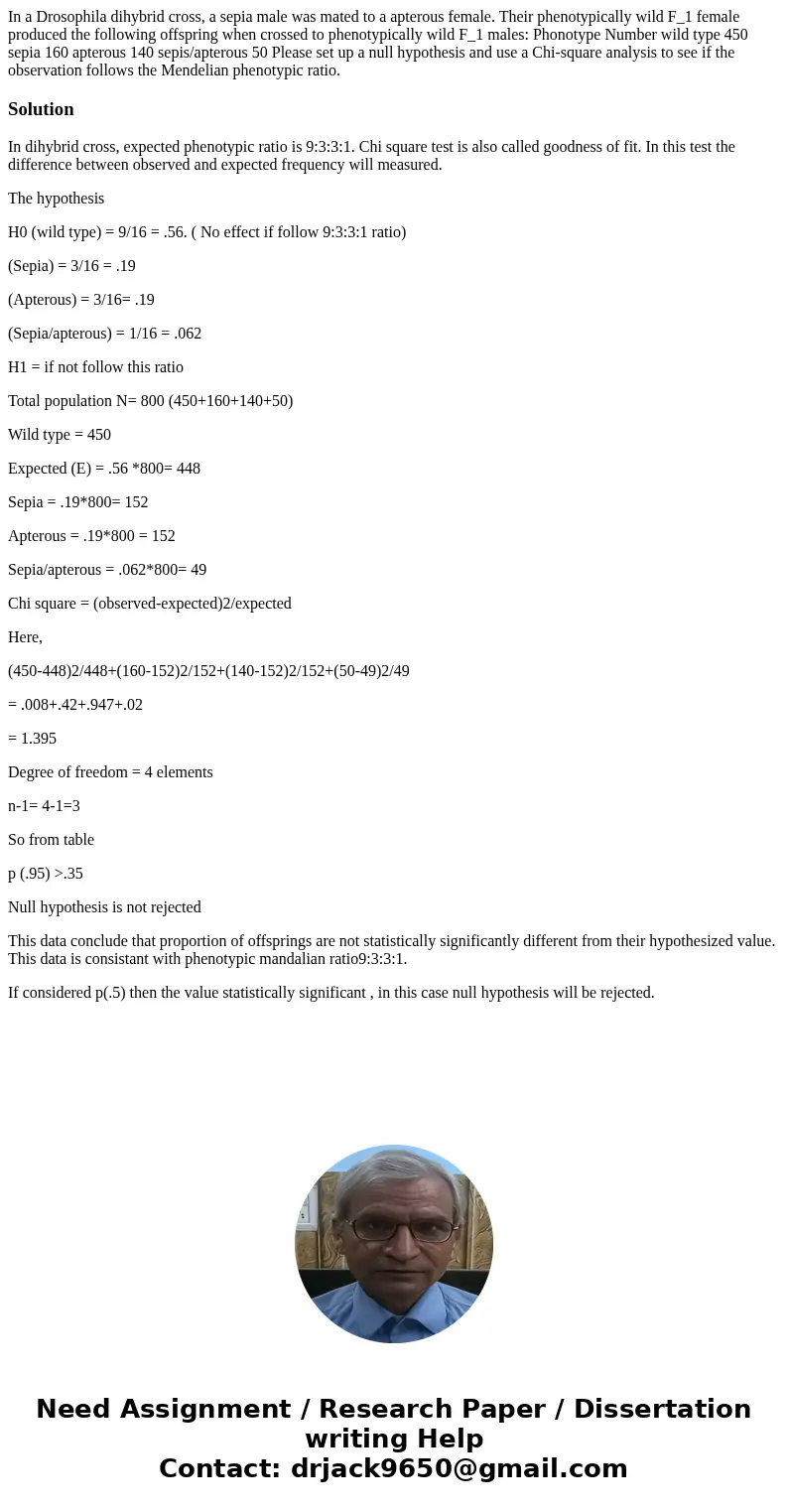In a Drosophila dihybrid cross a sepia male was mated to a a
Solution
In dihybrid cross, expected phenotypic ratio is 9:3:3:1. Chi square test is also called goodness of fit. In this test the difference between observed and expected frequency will measured.
The hypothesis
H0 (wild type) = 9/16 = .56. ( No effect if follow 9:3:3:1 ratio)
(Sepia) = 3/16 = .19
(Apterous) = 3/16= .19
(Sepia/apterous) = 1/16 = .062
H1 = if not follow this ratio
Total population N= 800 (450+160+140+50)
Wild type = 450
Expected (E) = .56 *800= 448
Sepia = .19*800= 152
Apterous = .19*800 = 152
Sepia/apterous = .062*800= 49
Chi square = (observed-expected)2/expected
Here,
(450-448)2/448+(160-152)2/152+(140-152)2/152+(50-49)2/49
= .008+.42+.947+.02
= 1.395
Degree of freedom = 4 elements
n-1= 4-1=3
So from table
p (.95) >.35
Null hypothesis is not rejected
This data conclude that proportion of offsprings are not statistically significantly different from their hypothesized value. This data is consistant with phenotypic mandalian ratio9:3:3:1.
If considered p(.5) then the value statistically significant , in this case null hypothesis will be rejected.

 Homework Sourse
Homework Sourse